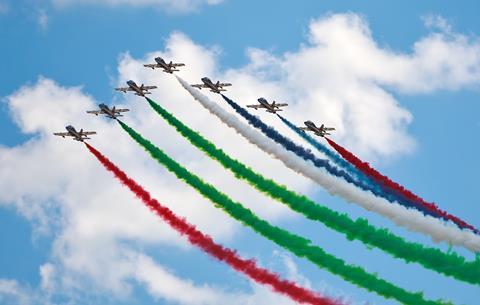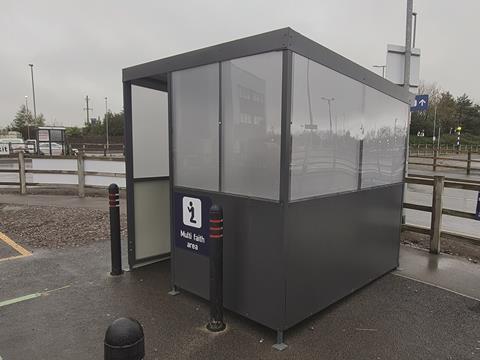The lighter side of Flight International.
Elevator formation
Access to FlightGlobal’s press-centre office at the Dubai air show was achieved via a small lift which – despite only serving the ground and first floors – was kept remarkably busy, with a surprising number of air show participants, many of them military, shuttling back and forth.

On one occasion, the doors opened to reveal the pilots of the UAE’s Al Fursan aerobatic team crammed in the compact space. Not unusual to see them travelling in such close proximity to one another, of course, but anyone hoping they’d dramatically exit, split up and synchronously disappear down different corridors would have been disappointed.
The astronaut and Airbus’s US lift-off
Another Apollo astronaut has sadly departed. As well as being the commander of the 1968 Apollo 8 mission – the first to circle the Moon – Frank Borman was also notable for helping Airbus crack the US market.

After retiring from the air force in 1970, the former fighter pilot went on to have a 16-year career with Eastern Airways, becoming its chief executive in 1975.
At the time, a still-infant Airbus faced the daunting task of breaking into the USA, taking on the might of Boeing, Lockheed and McDonnell Douglas.
The European manufacturer felt Eastern would benefit from using widebody twinjets and squeaked a slot to make a presentation to Borman. He was offered four whitetail A300s that Airbus had no customer for on an immediate trial lease lasting a few months. If the Miami-based airline liked them, it could keep them.
The Europeans’ audacity paid off. Eastern introduced the A300 to service in December 1977. Borman and his executive team were convinced, and they ended up ordering 23 of them.
Past imperfect
As part of its 20th anniversary celebrations during the Dubai air show, Etihad Airways released a timeline. The detailed graphic charts dozens of milestones and achievements by the United Arab Emirates flag-carrier between 2003 and 2022, including the entry into service of its Airbus A380, A350 and Boeing 787 aircraft, its high-profile sponsorships of Formula 1 and Manchester City, its humanitarian efforts during the early months of the Covid-19 crisis, and its joint venture with low-cost carrier Wizz Air.
Surprisingly, there seems to have been no room to list several initiatives that, at the time, Etihad executives were very keen to trumpet – the disastrous James Hogan-era strategy of investing billions of dollars in ailing airlines such as Air Berlin, Air Serbia, Alitalia, Darwin, and Jet Airways, in a bid to extend its route network and lure traffic to its Abu Dhabi hub.
In fact, Hogan, chief executive for 11 of those 20 years, does not merit a single mention in Etihad’s airbrushed version of history.
Easy pray
Bristol Airport was lambasted on social media after releasing this image of its new “multi-faith area”, which many likened to a smoking shelter or bus stop.
Following more than 2,000 withering comments, the airport took to X (formerly Twitter) to insist that the “area was created after we consulted widely and listened to feedback, to provide shelter and dignity prior to the winter”.



























